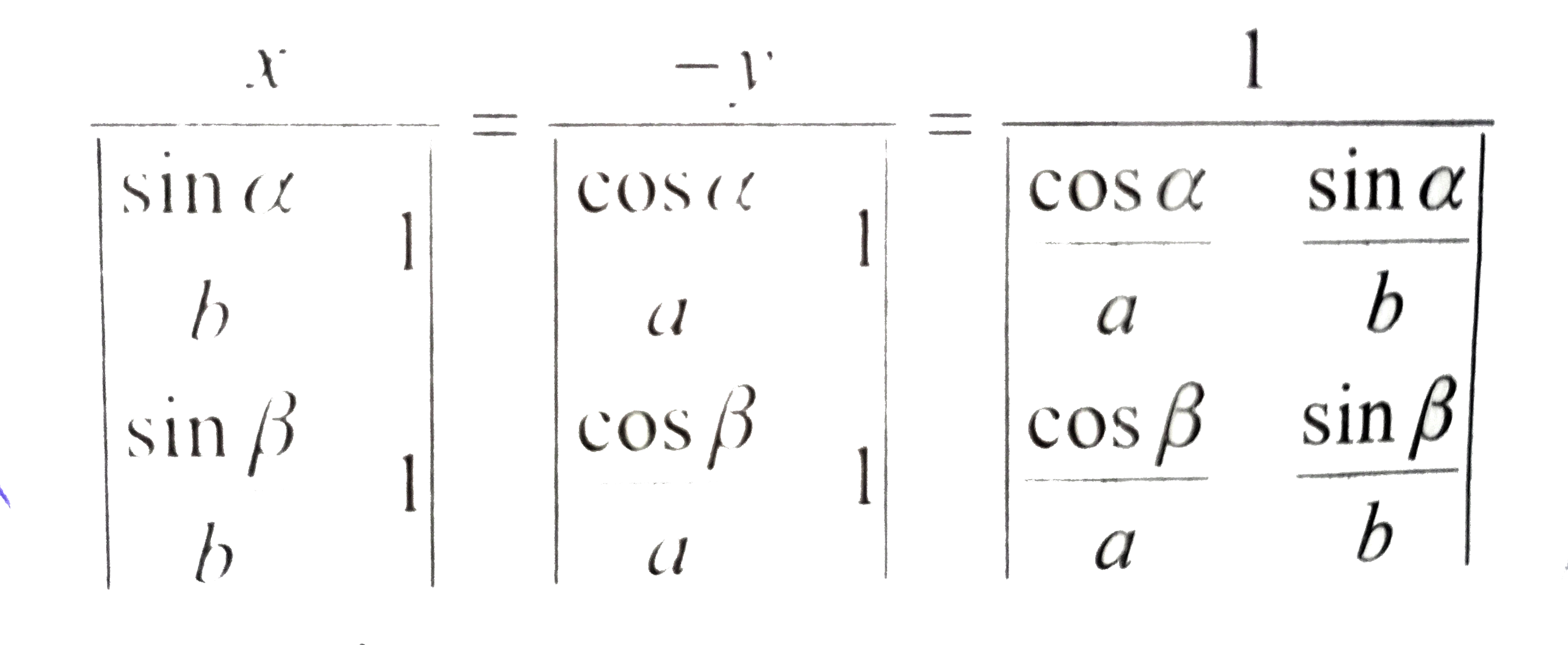If α−β= constant, then the locus of the point of intersection of tangents at P(acosα,bsinα) and Q(acosβ,bsinβ) to the ellipse x2a2+y2b2=1 is a circle (b) a straight line an ellipse (d) a parabola
a cricle
a straigth line
an ellipse
a parabola
Tangents to the ellipse at P and Q are, respectively,
xacosα+ybsinα=
andxacosβ+ybsinβ=1
Solving, (1) and (2) , we get

or x=a(sinα−sinβ)sin(β−α)
and y=−b(cosα−cosβ)sin(β−α)
and=−xsin(β−α)a=sinα−sinβ
y=−ysin(β−α)a=(cosα−cosβ)
Saqring and adding. we get
sin2(β−α)(x2a2+y2b2)=2
x2a2+y2b2=2sin2c [ where β−α=c (constant) given]
which is an ellipse
Similar Questions
If α−β= constant, then the locus of the point of intersection of tangents at P(acosα,bsinα) and Q(acosβ,bsinβ) to the ellipse x2a2+y2b2=1 is: (a) a circle (b) a straight line (c) an ellipse (d) a parabola
View SolutionIf α−β= constant, then the locus of the point of intersection of tangents at P(acosα,bsinα) and Q(acosβ,bsinβ) to the ellipse x2a2+y2b2=1 is: (a) a circle (b) a straight line (c) an ellipse (d) a parabola
View Solution
Knowledge Check
The locus of the point of intersection of tangents at the end-points of conjugate diameters of the ellipse x2a2+y2b2=1, is
Aa circleBa parabalaCan ellipseDa hyperbolaThe line x cos α+ysinα+ysinα=p is tangent to the ellipse x2a2+y2b2=1.if
Aa2cos2α+b2sin2α=p2Ba2sin2α+b2cos2α=p2Ca2cos2α−b2sin2α=p2Da2sin2α−b2cos2α=p2The locus of the point of intersection of tangents to the ellipse x2a2+y2b2=1, which make complementary angles with x - axis, is
Ax2+y2=a2+b2Bx2+y2=a2−b2Cx2−y2=a2+b2Dx2−y2=a2−b2
The line x cos α+ysinα=p is tangent to the ellipse x2a2+y2b2=1.if
View SolutionThe line x cos α+ysinα=p is tangent to the ellipse x2a2+y2b2=1.if
View SolutionThe locus of the point of intersection of the tangent at the endpoints of the focal chord of the ellipse x2a2+y2b2=1(b<a)(a) is a an circle (b) ellipse (c) hyperbola (d) pair of straight lines
View SolutionThe locus of the point of intersection of the tangent at the endpoints of the focal chord of the ellipse x2a2+y2b2=1(b<a)(a) is a an circle (b) ellipse (c) hyperbola (d) pair of straight lines
View SolutionThe locus of the point of intersection of tangents to the ellipse x2a2+y2b2=1, which make complementary angles with x - axis, is
View Solution
